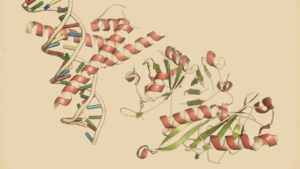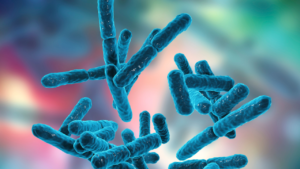Pain Management: 7 Insights from the Microbiota-Gut-Brain Axis
Unlock the secrets to effective pain management with our 7 insights into the Microbiota-Gut-Brain Axis. Discover your gut health now!

In This Article:
Key points
- Chronic pain is a global issue, affecting around 27.5% of the global population, and is a leading cause of disability.
- Current pain treatments, such as opioids, have limitations and can lead to adverse outcomes, highlighting the need for alternative therapies.
- The gut microbiota, consisting of various microorganisms, plays a crucial role in human health.
- The microbiota-gut-brain axis is a bidirectional communication system that has been linked to various central nervous system diseases and chronic pain conditions.
- Research shows that antibiotics and probiotics can alter pain-related responses, indicating the potential of gut microbiota in pain regulation.
- Targeting the gut microbiota through diet or pharmabiotic interventions could be a promising approach for chronic pain management.
- There is a growing interest in the connection between gut microbiota and pain, with an increasing number of publications and clinical trials exploring this relationship.
Connection Between Pain and the Gut Microbiome
Understanding Pain and Its Global Impact
Pain, an unpleasant sensory and emotional experience, is a prevalent condition worldwide, affecting approximately 27.5% of the global population A Trusted Source 1. Raja SN, Carr DB, Cohen M, Finnerup NB, Flor H, Gibson S, et al. The revised international association for the study of pain definition of pain: concepts, challenges, and compromises.Pain.(2020) 161:1976–82. doi: 10.1097/j.pain.0000000000001939 PubMed AbstractCrossRef Full TextGoogle Scholar A Trusted Source 2. Zimmer Z, Fraser K, Grol-Prokopczyk H, Zajacova AA. Global study of pain prevalence across 52 countries: examining the role of country-level contextual factors.Pain.(2022) 163:1740–50. doi: 10.1097/j.pain.0000000000002557 PubMed AbstractCrossRef Full TextGoogle Scholar.
Chronic pain, in particular, is a leading cause of disability, significantly impacting people's lives in both developed and developing countries A Trusted Source 3. O’Connell NE, Ferraro MC, Gibson W, Rice AS, Vase L, Coyle D, et al. Implanted spinal neuromodulation interventions for chronic pain in adults.Cochrane Database Syst Rev.(2021) 12:CD013756. doi: 10.1002/14651858.CD013756.pub2 PubMed AbstractCrossRef Full TextGoogle Scholar.
In the United States alone, one in three individuals suffer from chronic pain, leading to an economic burden of US$560 to US$635 billion annually due to medical costs and lost productivity A Trusted Source 4. Cohen SP, Vase L, Hooten WM. Chronic pain: an update on burden, best practices, and new advances.Lancet.(2021) 397:2082–97. doi: 10.1016/S0140-6736(21)00393-7 CrossRef Full TextGoogle Scholar.

In China, low back pain is the second leading cause of years lived with disability A Trusted Source 5. Wu A, Dong W, Liu S, Cheung JPY, Kwan KYH, Zeng X, et al. The prevalence and years lived with disability caused by low back pain in China, 1990 to 2016: findings from the global burden of disease study 2016.Pain.(2019) 160:237–45. doi: 10.1097/j.pain.0000000000001396 PubMed AbstractCrossRef Full TextGoogle Scholar.
Moreover, up to 70% of cancer patients report experiencing pain, further highlighting the need for effective pain management strategies A Trusted Source 6. Haumann J, Joosten EBA, Everdingen M. Pain prevalence in cancer patients: status quo or opportunities for improvement?Curr Opin Support Palliat Care.(2017) 11:99–104. doi: 10.1097/SPC.0000000000000261PubMed AbstractCrossRef Full TextGoogle Scholar.
The Inadequacy of Current Pain Treatments
While pain affects a significant portion of the global population, current treatment options are limited, often revolving around opioids.
This dependence on opioids has led to adverse outcomes, such as overdose deaths and addiction, especially prevalent in the United States A Trusted Source 8. Volkow ND, McLellan AT. Opioid abuse in chronic pain–misconceptions and mitigation strategies.N Engl J Med.(2016) 374:1253–63. doi: 10.1056/NEJMra1507771 PubMed AbstractCrossRef Full TextGoogle Scholar.
Thus, there is an urgent need for novel therapeutic alternatives for chronic pain management.
The Gut Microbiota and Its Role in Pain Management
The gut microbiota, a complex ecosystem comprising over 100 species and 7,000 strains of bacteria, archaea, fungi, protozoa, and viruses, plays a crucial role in our health A Trusted Source 9. Pusceddu MM, Gareau MG. Visceral pain: gut microbiota, a new hope?J Biomed Sci.(2018) 25:73. doi: 10.1186/s12929-018-0476-7 PubMed AbstractCrossRef Full TextGoogle Scholar A Trusted Source 10. Lin B, Wang Y, Zhang P, Yuan Y, Zhang Y, Chen G. Gut microbiota regulates neuropathic pain: potential mechanisms and therapeutic strategy.J Headache Pain.(2020) 21:103. doi: 10.1186/s10194-020-01170-x PubMed AbstractCrossRef Full TextGoogle Scholar.
Recent studies highlight the significance of the microbiota-gut-brain axis, a bidirectional communication system involving the immune, endocrine, systemic, and neuronal pathways A Trusted Source 11. Agirman G, Hsiao EY. Snapshot: the microbiota-gut-brain axis.Cell.(2021) 184:2524–e1. doi: 10.1016/j.cell.2021.03.022 PubMed AbstractCrossRef Full TextGoogle Scholar.
Disturbances in this axis have been linked to various central nervous system (CNS) diseases, including depression, anxiety, Alzheimer’s disease, autism, and Parkinson’s disease A Trusted Source 12. Mayneris-Perxachs J, Castells-Nobau A, Arnoriaga-Rodriguez M, Martin M, de la Vega-Correa L, Zapata C, et al. Microbiota alterations in proline metabolism impact depression.Cell Metab.(2022) 34:681–701e10. doi: 10.1016/j.cmet.2022.04.001PubMed AbstractCrossRef Full TextGoogle Scholar A Trusted Source 20. Hou YF, Shan C, Zhuang SY, Zhuang QQ, Ghosh A, Zhu KC, et al. Gut microbiota-derived propionate mediates the neuroprotective effect of osteocalcin in a mouse model of Parkinson’s disease.Microbiome.(2021) 9:34. doi: 10.1186/s40168-020-00988-6 PubMed AbstractCrossRef Full TextGoogle Scholar.
Moreover, the relationship between gut microbiota and pain has gained increasing attention.
The microbiota-derived mediators, such as PAMPs, toxins, SCFAs, KYNA, cytokines, and neurotransmitters, have been shown to impact both the peripheral and CNS, directly or indirectly regulating the peripheral nervous system under chronic pain conditions A Trusted Source 22. Ji RR, Chamessian A, Zhang YQ. Pain regulation by non-neuronal cells and inflammation.Science.(2016) 354:572–7. doi: 10.1126/science.aaf8924 PubMed AbstractCrossRef Full TextGoogle Scholar A Trusted Source 23. Guo R, Chen LH, Xing C, Liu T. Pain regulation by gut microbiota: molecular mechanisms and therapeutic potential.Br J Anaesth.(2019) 123:637–54. doi: 10.1016/j.bja.2019.07.026 PubMed AbstractCrossRef Full TextGoogle Scholar .
Research also indicates that antibiotics and probiotics can alter visceral pain-related responses, further solidifying the potential of gut microbiota in pain regulation A Trusted Source 24. Aguilera M, Cerda-Cuellar M, Martinez V. Antibiotic-induced dysbiosis alters host-bacterial interactions and leads to colonic sensory and motor changes in mice.Gut Microbes.(2015) 6:10–23. doi: 10.4161/19490976.2014.990790 PubMed AbstractCrossRef Full TextGoogle Scholar
Therefore, targeting the gut microbiota through diet or pharmabiotic interventions could be a promising approach for chronic pain management A Trusted Source 23. Guo R, Chen LH, Xing C, Liu T. Pain regulation by gut microbiota: molecular mechanisms and therapeutic potential.Br J Anaesth.(2019) 123:637–54. doi: 10.1016/j.bja.2019.07.026 PubMed AbstractCrossRef Full TextGoogle Scholar.
The global impact of pain is vast, affecting millions and costing billions.

Despite the availability of treatments like opioids, there is a need for more effective and less harmful pain management strategies.
The gut microbiota has emerged as a promising avenue for chronic pain management, with numerous studies highlighting its potential role in regulating pain pathways.
This article serves as a comprehensive overview of the current state of pain management, and the role of gut microbiota in pain regulation.
Exploring the Nexus: Gut Microbiota and Pain
When it comes to the global collaboration network, the USA takes the crown, followed by Baylor College of Medicine and esteemed scholar Vassilia Theodorou.
The keywords that are currently setting the research world abuzz?
Look no further than the brain-gut axis and chain fatty acids.
A special mention must go to short-chain fatty acids (SCFAs) - the metabolites of gut microbiota that play a pivotal role in the brain-gut axis, and are seen as the future of pain regulation research in relation to gut microbiota.
Zooming out, we've witnessed exponential growth in publications, with a CAGR of 35.10% since 2016.
Pioneering studies by Falony et al. and Zhernakova et al. have opened new frontiers, conducting the first metagenomics analysis of the gut microbiome with over 1,000 participants from Belgium and the Netherlands A Trusted Source 41. Zhernakova A, Kurilshikov A, Bonder MJ, Tigchelaar EF, Schirmer M, Vatanen T, et al. Population-based metagenomics analysis reveals markers for gut microbiome composition and diversity.Science.(2016) 352:565–9. doi: 10.1126/science.aad3369 PubMed AbstractCrossRef Full TextGoogle Scholar.
This ushered in a new era of microbial whole-genome resequencing, as highlighted by three subsequent studies A Trusted Source 42. Benson AK. The gut microbiome-an emerging complex trait.Nat Genet.(2016) 48:1301–2. doi: 10.1038/ng.3707 PubMed AbstractCrossRef Full TextGoogle Scholar.
China has recently overtaken the USA in terms of published papers, although the USA continues to be a major player, thanks to substantial financial backing from the US National Institute of Mental Health (NIMH)
and the US Office of Naval Research, collectively injecting millions into gut microbiota-brain axis research A Trusted Source 35. Smith PA. The tantalizing links between gut microbes and the brain.Nature.(2015) 526:312–4. doi: 10.1038/526312a PubMed AbstractCrossRef Full TextGoogle Scholar.
Analyzing Journal Citations and Clinical Trials
Among the top 10 most cited journals, "Gut" and "Alimentary Pharmacology and Therapeutics" were prominent, with "Gut" taking the lead in average citations per paper A Trusted Source 43. Vinolo MA, Rodrigues HG, Nachbar RT, Curi R. Regulation of inflammation by short chain fatty acids.Nutrients.(2011) 3:858–76. doi: 10.3390/nu3100858 PubMed AbstractCrossRef Full TextGoogle Scholar.
Notably, these journals contributed to less than a quarter of the total articles.
In terms of clinical trials, four out of six studies focused on the effects of probiotics on patients with Irritable Bowel Syndrome (IBS) A Trusted Source 45. Kajander K, Hatakka K, Poussa T, Farkkila M, Korpela RA. Probiotic mixture alleviates symptoms in irritable bowel syndrome patients: a controlled 6-month intervention.Aliment Pharmacol Ther.(2005) 22:387–94. doi: 10.1111/j.1365-2036.2005.02579.x PubMed AbstractCrossRef Full TextGoogle Scholar A Trusted Source 48. Kim HJ, Vazquez Roque MI, Camilleri M, Stephens D, Burton DD, Baxter K, et al. A randomized controlled trial of a probiotic combination Vsl# 3 and placebo in irritable bowel syndrome with bloating.Neurogastroenterol Motil.(2005) 17:687–96. doi: 10.1111/j.1365-2982.2005.00695.x PubMed AbstractCrossRef Full TextGoogle Scholar
, while one study explored microbiota transfer therapy's impact on gastrointestinal and autism symptoms in Autism Spectrum Disorders (ASD) patients A Trusted Source 36. Kang DW, Adams JB, Gregory AC, Borody T, Chittick L, Fasano A, et al. Microbiota transfer therapy alters gut ecosystem and improves gastrointestinal and autism symptoms: an open-label study.Microbiome.(2017) 5:10. doi: 10.1186/s40168-016-0225-7 PubMed AbstractCrossRef Full TextGoogle Scholar.
The Landscape of Co-Citation and Cluster Analysis
Co-citation references analysis revealed "Gastroenterology" as a leading publication platform, with a majority of articles elaborating on the role of intestinal microbiota in functional bowel disorders A Trusted Source 50. Simren M, Barbara G, Flint HJ, Spiegel BM, Spiller RC, Vanner S, et al. Intestinal microbiota in functional bowel disorders: a rome foundation report.Gut.(2013) 62:159–76. doi: 10.1136/gutjnl-2012-302167 PubMed AbstractCrossRef Full TextGoogle Scholar A Trusted Source 51. Kassinen A, Krogius-Kurikka L, Makivuokko H, Rinttila T, Paulin L, Corander J, et al. The fecal microbiota of irritable bowel syndrome patients differs significantly from that of healthy subjects.Gastroenterology.(2007) 133:24–33. doi: 10.1053/j.gastro.2007.04.005 PubMed AbstractCrossRef Full TextGoogle Scholar.
The most co-cited reference was a 2017 publication in "Nature Neuroscience," highlighting the reduced oxaliplatin-induced mechanical hyperalgesia in germ-free mice A Trusted Source 28. Shen S, Lim G, You Z, Ding W, Huang P, Ran C, et al. Gut microbiota is critical for the induction of chemotherapy-induced pain.Nat Neurosci.(2017) 20:1213–6. doi: 10.1038/nn.4606 PubMed AbstractCrossRef Full TextGoogle Scholar.
Cluster visualization exhibited "fibromyalgia" as an emerging theme A Trusted Source 54. Clos-Garcia M, Andres-Marin N, Fernandez-Eulate G, Abecia L, Lavin JL, van Liempd S, et al. Gut microbiome and serum metabolome analyses identify molecular biomarkers and altered glutamate metabolism in fibromyalgia.EBioMedicine.(2019) 46:499–511. doi: 10.1016/j.ebiom.2019.07.031PubMed AbstractCrossRef Full TextGoogle Scholar, with Minerbi et al. demonstrating gut microbiome alteration in non-visceral pain for the first time A Trusted Source 55. Minerbi A, Gonzalez E, Brereton NJB, Anjarkouchian A, Dewar K, Fitzcharles MA, et al. Altered microbiome composition in individuals with fibromyalgia.Pain.(2019) 160:2589–602. doi: 10.1097/j.pain.0000000000001640 PubMed AbstractCrossRef Full TextGoogle Scholar.
Unraveling the Complex Web of Microbial Metabolites and Pain Signaling
Half of the 20 keywords began between 2015 and 2019, which was probably related to the publication outputs burst since 2016. “Health,” “brain axis,” “mechanism,” “chain fatty acid,” “microbiota,” “prevalence,” and “quality of life” were the current research hotspots. “Health,” “mechanism,” “prevalence,” and “quality of life” are of little practical significance, and “brain axis” means brain-gut axis.
SCFAs, a byproduct of bacterial fermentation, play a pivotal role in modulating leucocyte functions and cytokine production, thus impacting pain perception.
For instance, butyrate enhances anti-inflammatory cytokine IL-10 release, offering pain relief in a mouse model of nitroglycerine (NTG)-induced migraine A Trusted Source 43. Vinolo MA, Rodrigues HG, Nachbar RT, Curi R. Regulation of inflammation by short chain fatty acids.Nutrients.(2011) 3:858–76. doi: 10.3390/nu3100858 PubMed AbstractCrossRef Full TextGoogle Scholar A Trusted Source 57. Lanza M, Filippone A, Ardizzone A, Casili G, Paterniti I, Esposito E, et al. Scfa treatment alleviates pathological signs of migraine and related intestinal alterations in a mouse model of Ntg-induced migraine.Cells.(2021) 10:2756. doi: 10.3390/cells10102756 PubMed AbstractCrossRef Full TextGoogle Scholar.
On the other hand, microbial metabolites like GABA and 5-HT act as neurotransmitters, influencing nociceptive transmission A Trusted Source 62. Du X, Hao H, Yang Y, Huang S, Wang C, Gigout S, et al. Local gabaergic signaling within sensory ganglia controls peripheral nociceptive transmission.J Clin Invest.(2017) 127:1741–56. doi: 10.1172/JCI86812 PubMed AbstractCrossRef Full TextGoogle Scholar A Trusted Source 63. Cortes-Altamirano JL, Olmos-Hernandez A, Jaime HB, Carrillo-Mora P, Bandala C, Reyes-Long S, et al. Review: 5-Ht1, 5-Ht2, 5-Ht3 and 5-Ht7 receptors and their role in the modulation of pain response in the central nervous system.Curr Neuropharmacol.(2018) 16:210–21. doi: 10.2174/1570159X15666170911121027 PubMed AbstractCrossRef Full TextGoogle Scholar.

Exploring Experimental Therapies and Future Prospects
Various experimental therapies are under investigation, including probiotics, low-FODMAP interventions, and fecal microbiota transplantation (FMT).
However, conflicting results and the complexity of visceral pain pose challenges in developing effective treatments A Trusted Source 65. Sm OM, Dinan TG, Cryan JF. The gut microbiota as a key regulator of visceral pain.Pain.(2017) 158(Suppl. 1):S19–28. doi: 10.1097/j.pain.0000000000000779 PubMed AbstractCrossRef Full TextGoogle Scholar.
The burgeoning field of gut microbiota and pain research necessitates further exploration to unravel the intricacies of this relationship and provide targeted therapeutic interventions A Trusted Source 66. Cervero F, Laird JM. Visceral pain.Lancet.(1999) 353:2145–8. doi: 10.1016/S0140-6736(99)01306-9 PubMed AbstractCrossRef Full TextGoogle Scholar.
Navigating the Limitations and Way Forward
While this study offers a bird’s-eye view of the research landscape, certain limitations exist, such as database restrictions and potential biases in the search strategy.
Furthermore, the rapid growth in publications emphasizes the need for continuous monitoring and analysis to stay abreast of emerging trends and hotspots in this evolving field.
Discussion
- The global impact of pain is significant, affecting millions of people and costing billions of dollars.
- Current pain treatments, such as opioids, are limited and can have harmful side effects.
- The gut microbiota plays a crucial role in human health and has been linked to various central nervous system diseases and chronic pain conditions.
- Research shows that antibiotics and probiotics can alter pain-related responses, highlighting the potential of gut microbiota in pain regulation.
- There is a need for more research to fully understand the relationship between gut microbiota and pain.
Conclusion
- The gut microbiota is a promising avenue for chronic pain management.
- Targeting the gut microbiota through diet or pharmabiotic interventions could provide novel therapeutic alternatives for pain management.
- More research is needed to unravel the complexities of the relationship between gut microbiota and pain and develop targeted therapeutic interventions.
- Continuous monitoring and analysis are essential to stay abreast of emerging trends and hotspots in this evolving field.
Review date not set.
How we reviewed this article:
Latest on:





